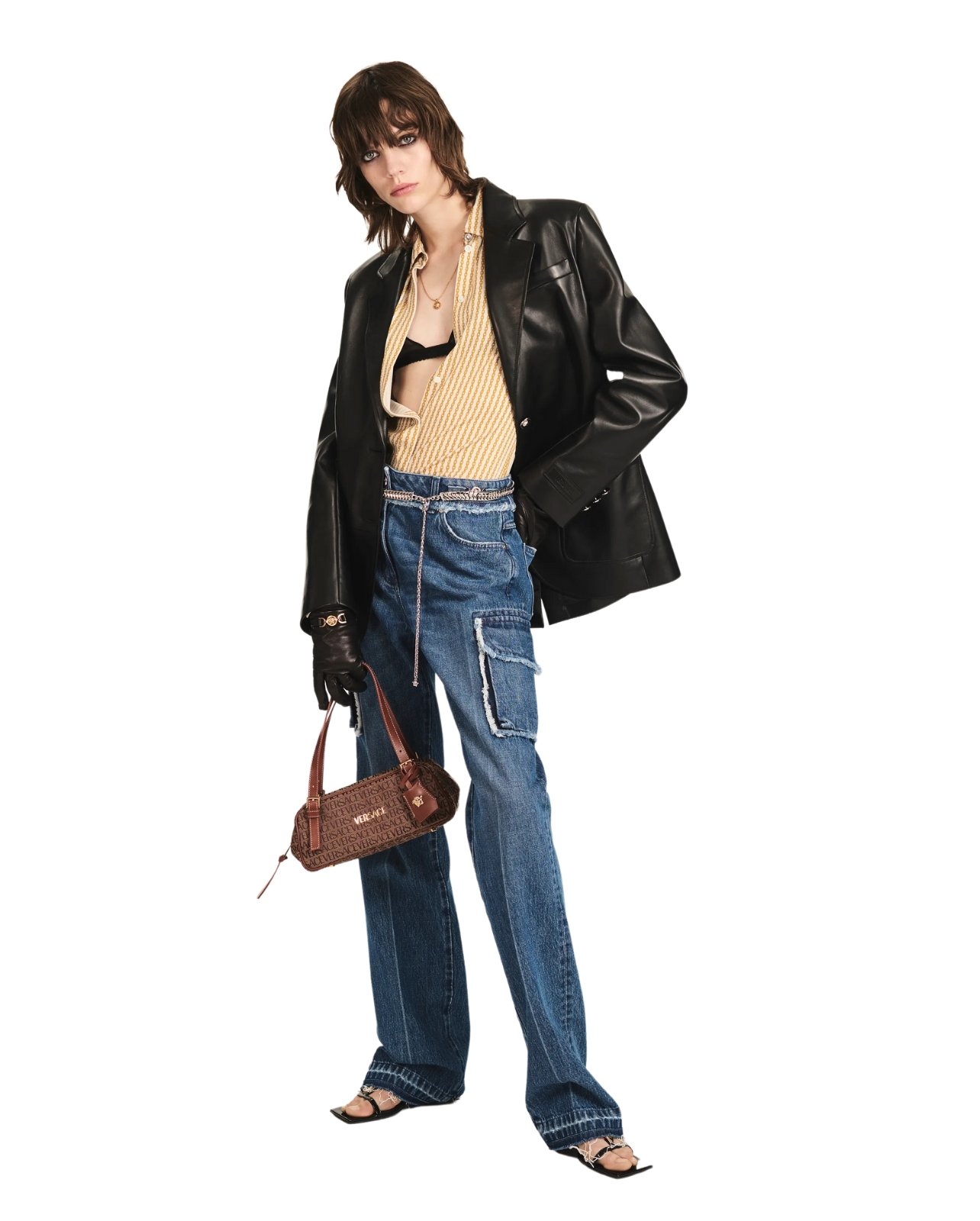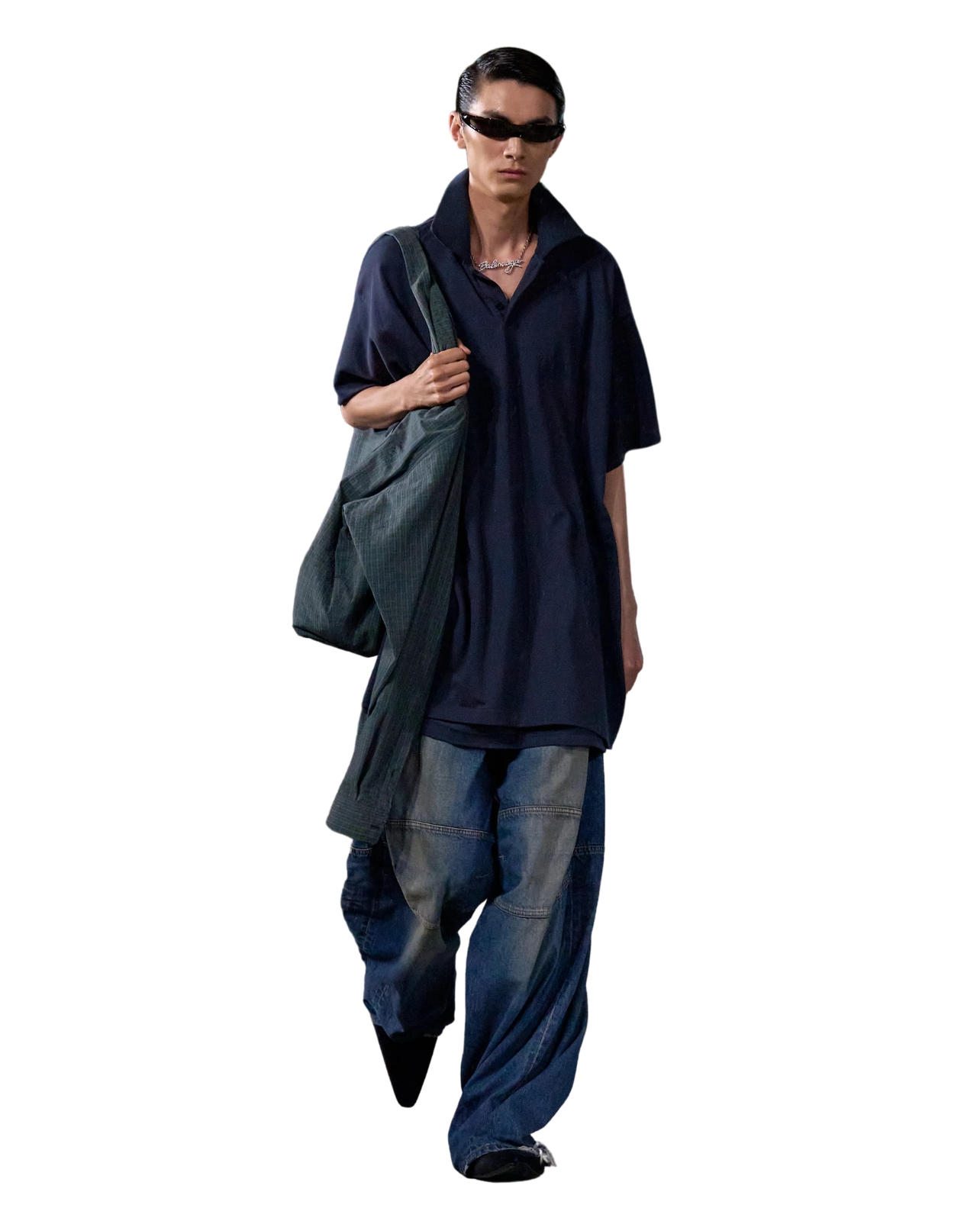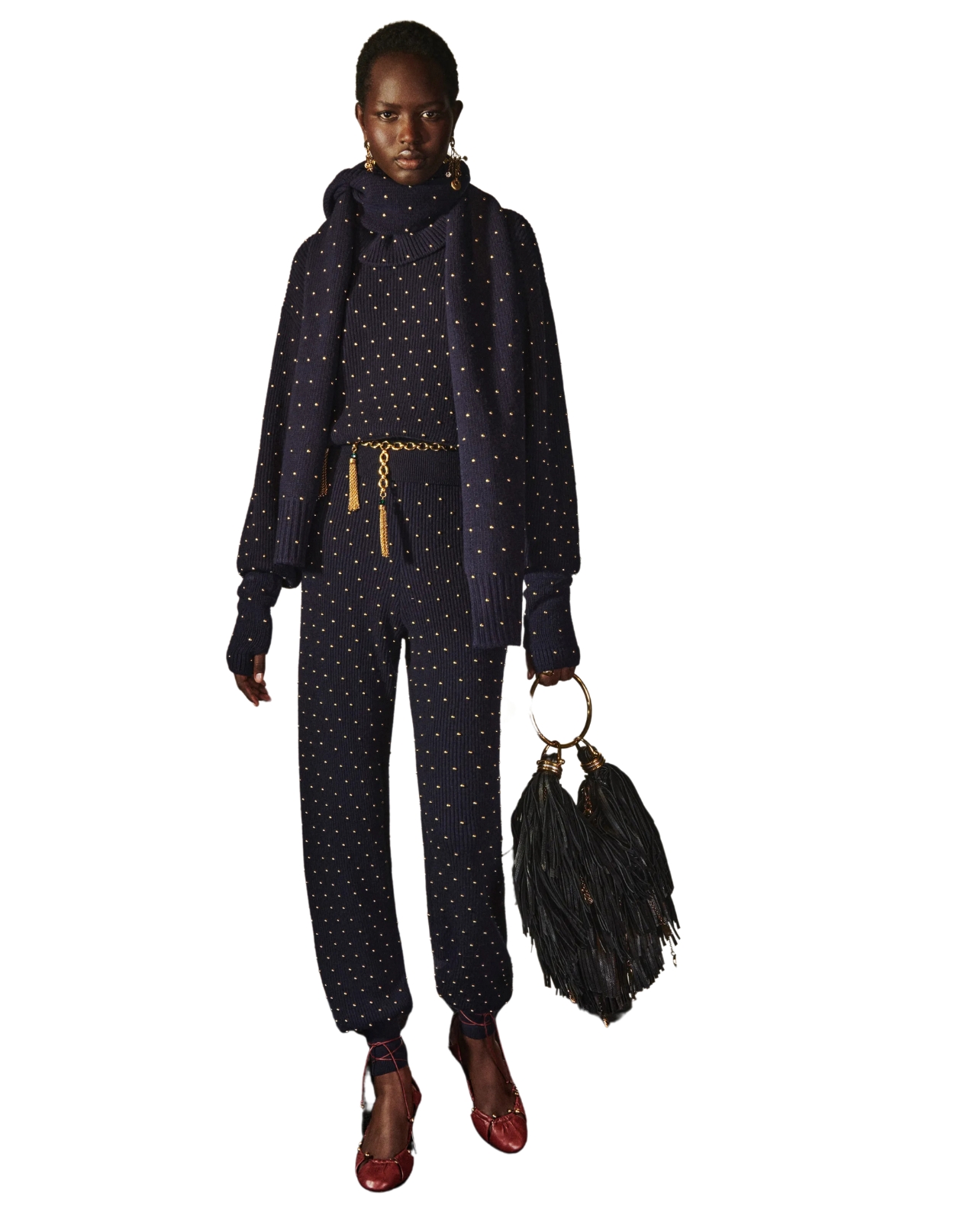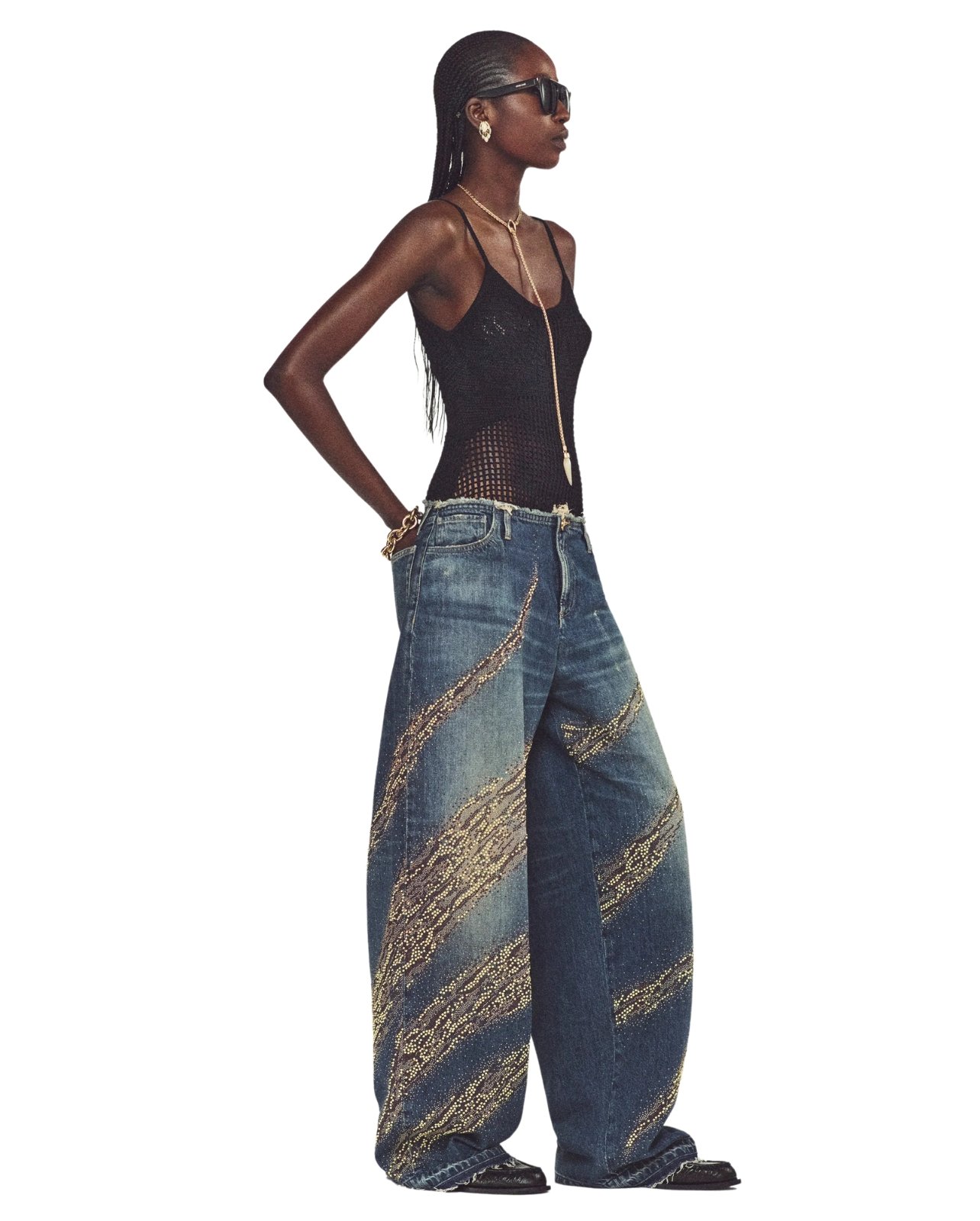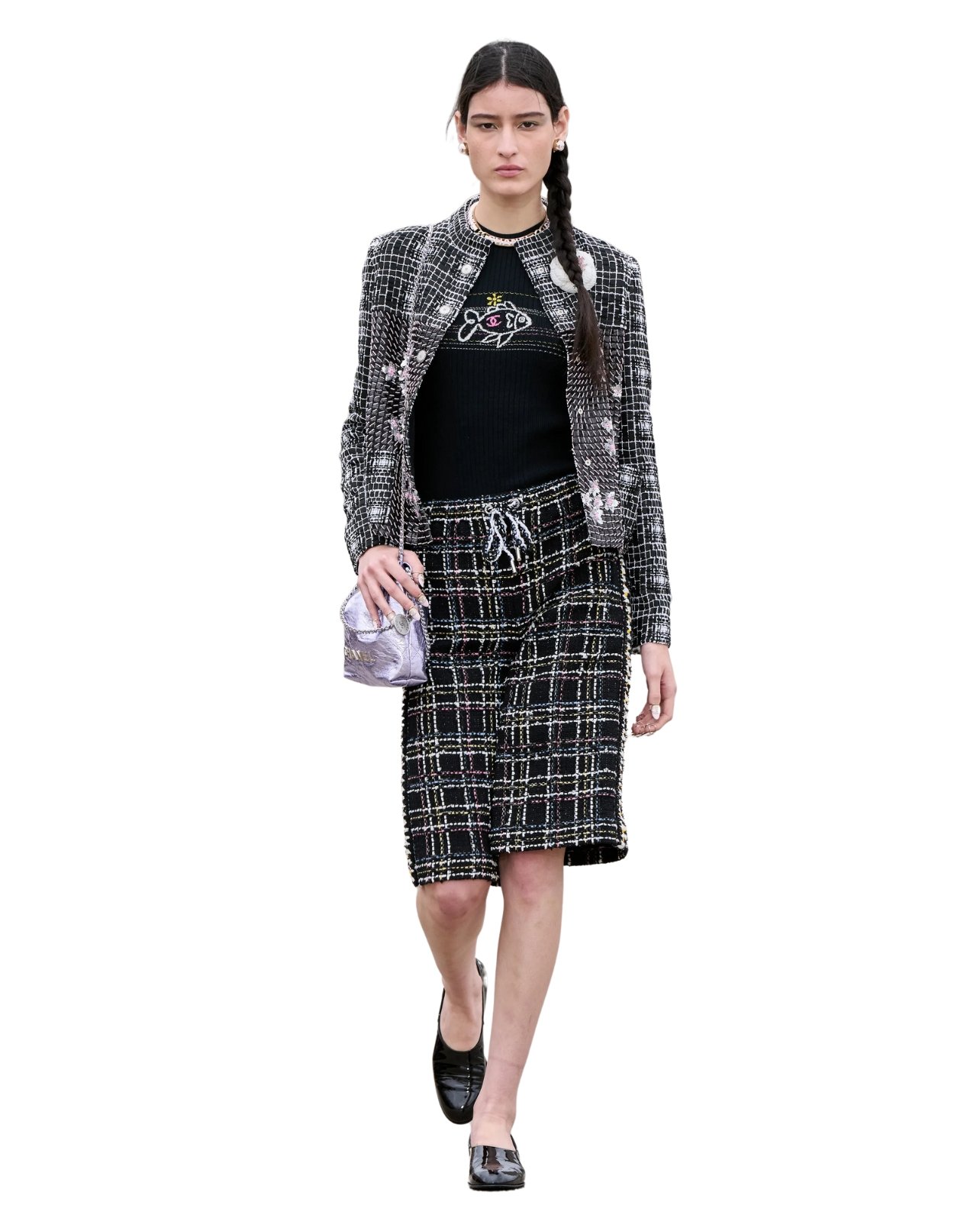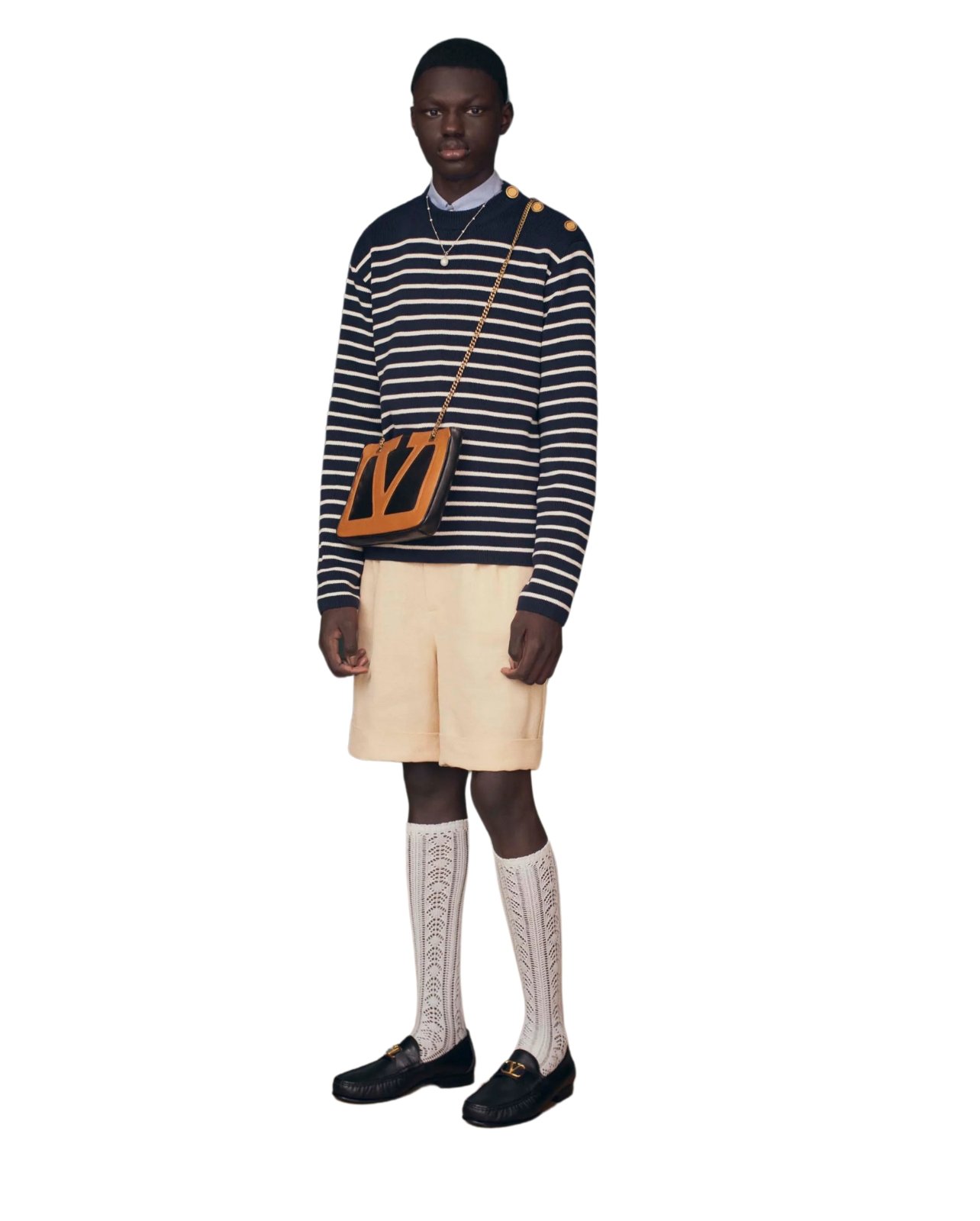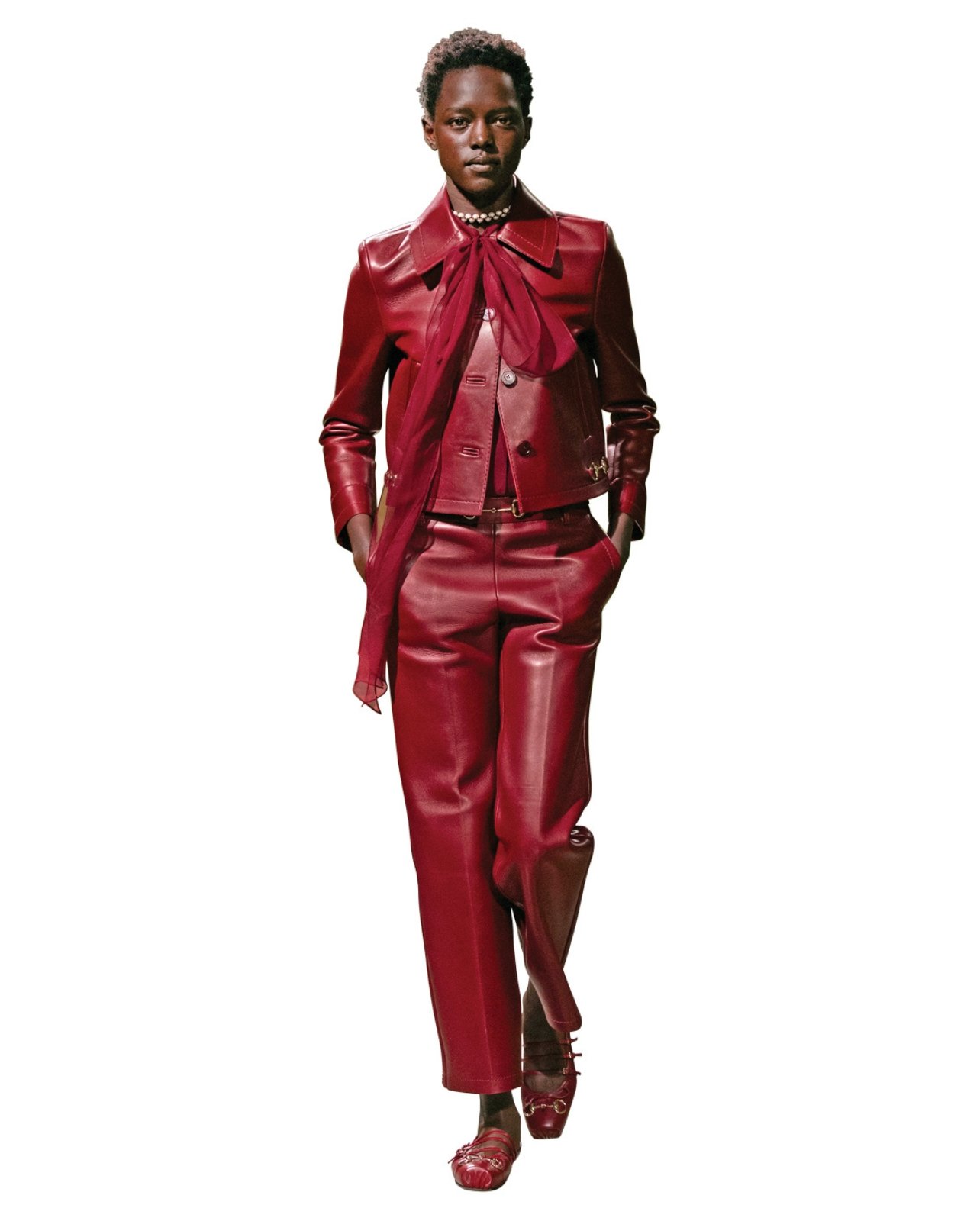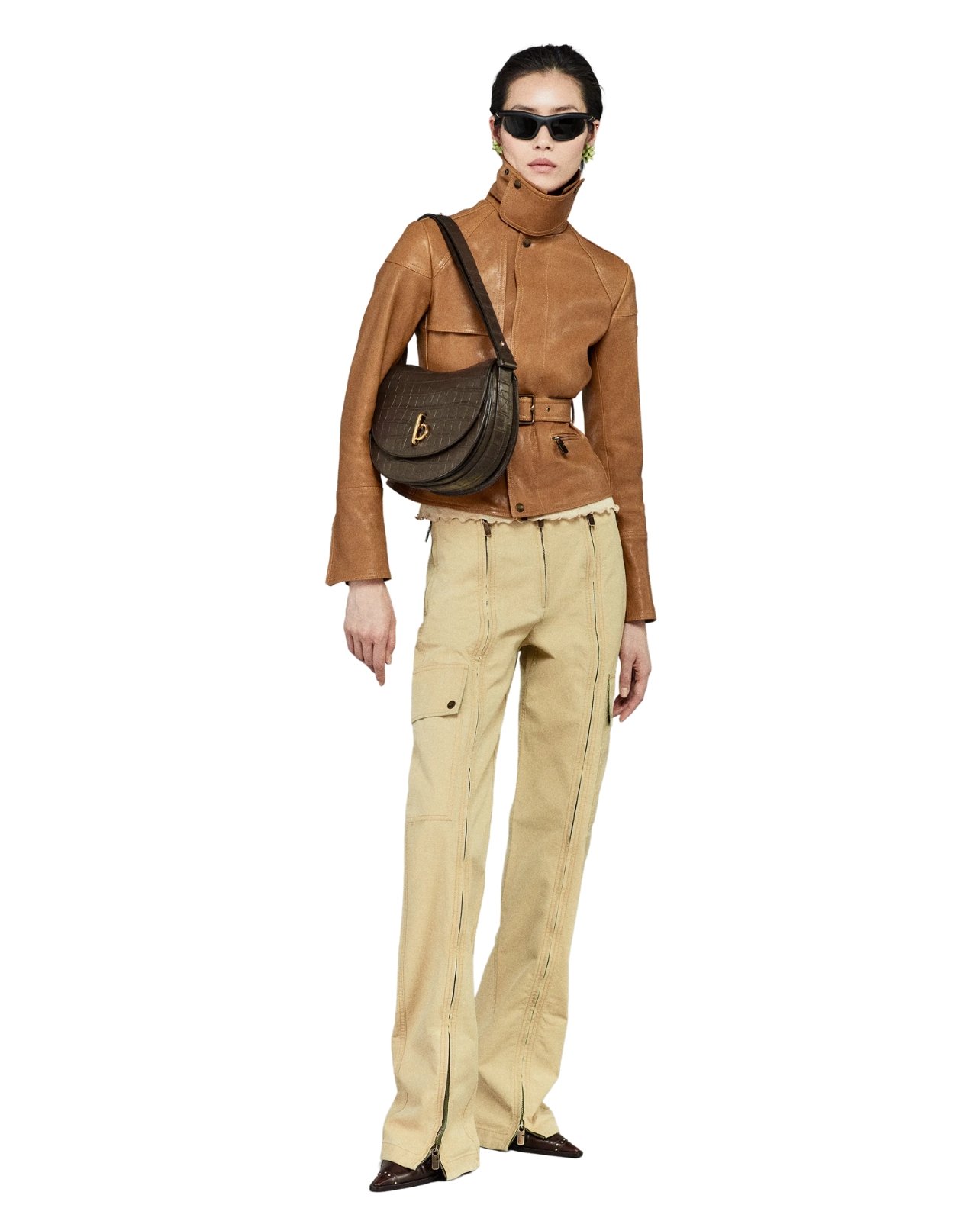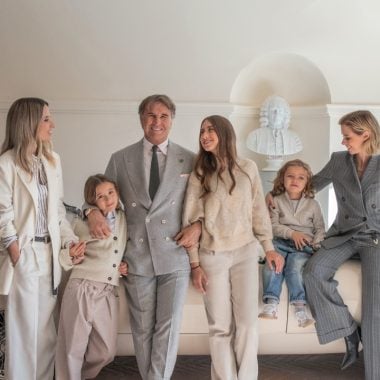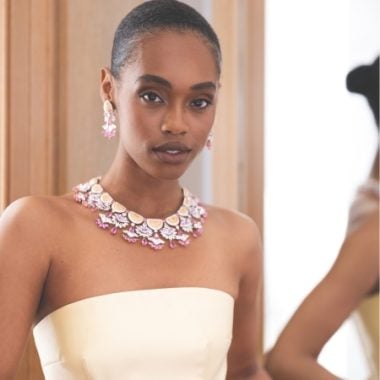By Nick Remsen
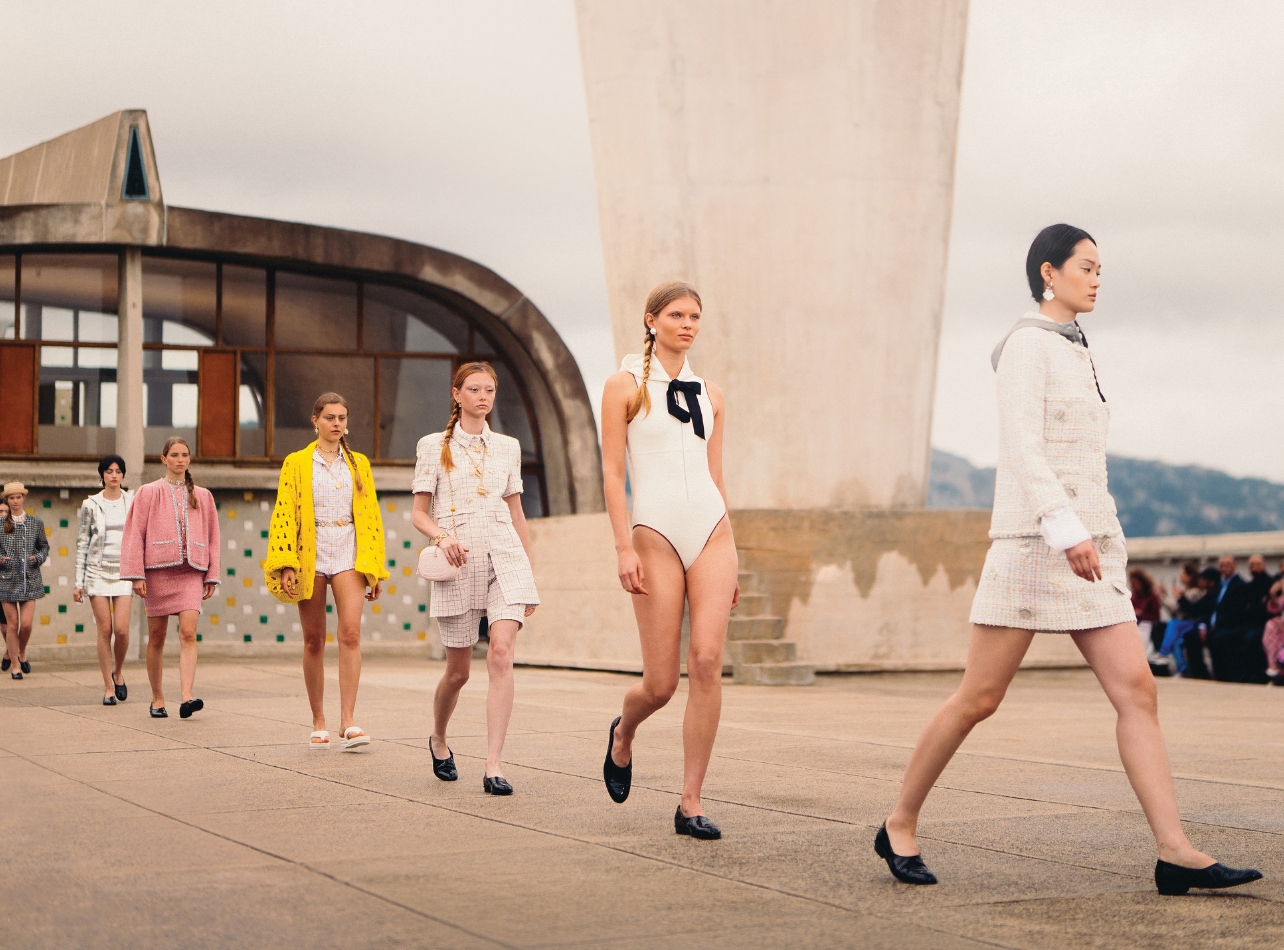
Chanel’s Cruise 2024-25 collection, presented atop Le Corbusier’s Unite d’Habitation building in Marseille, France, is available now at Bal Harbour Shops. Image courtesy of Chanel.
Atop a Le Corbusier–designed building in urbane Marseille, France, Virginie Viard unveiled what would be her final collection for Chanel: Resort 2025. The setting, while interesting, did not really have anything to do with the clothes. Viard’s proposal was more athletic in feel, less architectural in silhouette. Chanel-isms like tweed and offhand senses of chic were all apparent, yet the standouts of the collection were its trousers and shorts: namely knee-length Bermudas, which stood tall against the kind of mixed, juxtaposed messaging of the staging. Every year it seems there’s less rhyme or reason as to how, when, and where fashion brands show their collections. Houses hop on and off the traditional catwalk calendars like passengers on morning métro rides, and some even take liberties with their seasons’ labels. (Is it Summer? Is it Pre-Fall?) But the show element is only just that: theatrical ephemera and, increasingly, social media brouhaha—and ever-less-so a platform for buyers. What these productions really do, beyond the lights, is tee up what consumers will soon be buying; even with a non-fixed runway schedule, fashion’s delivery cycle has remained consistent. And there’s no delivery that’s more of a rampart than Resort, which starts to arrive in November and can remain on hangers until April.
Resort, sometimes called Cruise (though this has died out a bit), arrives after Fall/Winter and before Spring/Summer. And it is a somewhat amorphous thing. Resort collections used to serve sunseekers and snowbirds jetting to warmer climes for the holidays and early winter months: light, bright, tropical, or desert clothes that you’ve seen on old postcards of pretty young things in Islamorada or Palm Springs.
But these days, Resort has to touch on a bit of everything—ski and alpine garb included—because the people who can afford these clothes are now more everything everywhere-all-at-once. There has also been a broadening of fashion consumption; there’s a far wider and more diverse clientele than in decades past (in large part because of that social media brouhaha mentioned above; it’s not all bad!). So what does Resort look like going into 2025? It’s a mixed bag, to be certain, but a clear standout is an uptick in looks and concepts anchored by chic trousers or Bermuda shorts à la Chanel. Dressier, frillier, floatier things seem forgettable right now; pants and shorts and their variants are consistent: steadfast staples from the steadiest season.
There were solid shorts on view at Valentino, which was Alessandro Michele’s debut for the house after his 20-year tenure at Gucci. To illustrate just how much horsepower Resort needs: Valentino’s lineup has 171 looks, which is about five times the average amount in a collection! Jeans ran multiple stylistic gamuts. At Balenciaga, they were baggy and darkly acid-washed. They looked especially good when paired with an oversized polo shirt. At Roberto Cavalli, denim trousers were also baggy yet scraped and inlaid with a louder textile treatment: almost as if a giant tiger had swiped at the raw material after it was sewn, clawing out its lining. At Versace, Donatella Versace channeled a late-1980’s–to-early–90’s spirit with skinnier, slouchier cuts. The designer said she was thinking of the heyday around Versus, the former Versace splinter line that was a little younger in verve (and a little easier on credit cards). Also, there were some outliers for the more adventurous but no less stylish. See: knit joggers with beading at Chloé by Chemena Kamali; oxblood leather square-cut trousers at Gucci by Sabato De Sarno; and technical neo-cargo pants at Burberry by Daniel Lee.
These garments and more seem to underline the durability that’s needed in contemporary Resort merchandising: pants are repeatable, versatile, formal and casual in tandem, somewhat easy and never really considered in bad taste. So, indeed, there is a bit of subconsciousness afoot here—looking for longevity in the longest season, all of that. Yet pragmatically speaking, there is something particularly rewarding about buying, and wearing the hell out of, a damn good pair of trousers or shorts. In a fashion world of shifting conventions and fleeting moments, pants and their ilk are the wardrobe equivalents of the long game. We think there’s real value in playing it.

